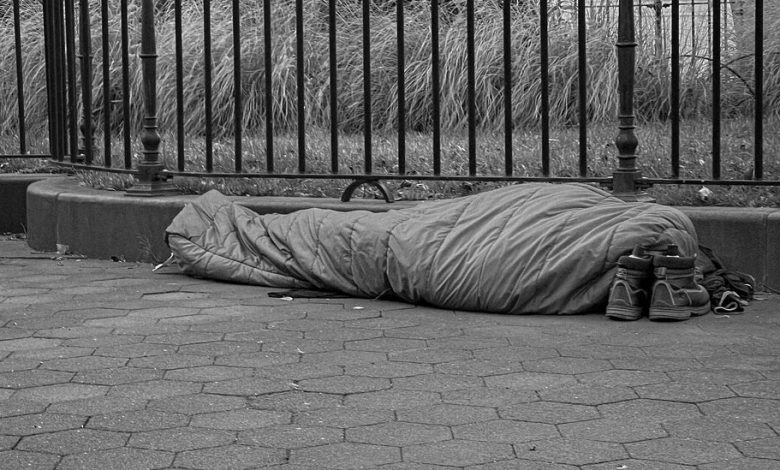Why New York Needs a Right to Shelter

For months, New York politicians have been trying to dispense with an inconvenient mandate: a decades-old rule requiring New York City to provide shelter to anyone in need who asks.
Mayor Eric Adams has gone to court to suspend the rule, saying the city cannot fulfill the obligation after more than 145,000 migrants arrived in New York from the southern U.S. border in the past 18 months. In a court filing last week, a lawyer for Gov. Kathy Hochul said the state would support the city’s request.
The surge of new arrivals has tested New York and strained its budget, and in this context, Mr. Adams’s and Ms. Hochul’s arguments might seem reasonable to even the most compassionate New Yorkers. The right-to-shelter mandate was enacted in the early 1980s after the deaths of homeless men on city streets, which the courts agreed violated the State Constitution’s requirement for “support of the needy.” Today, the city is spending an average of $383 per family per night, according to city officials, to shelter tens of thousands of migrants from around the world, a tab the federal government should be picking up.
The cost of suspending the city’s right-to-shelter mandate, however, is almost certain to be much greater. Officials who want to temporarily lift it don’t seem to be considering the possible long-term consequences.
Mr. Adams has said the mandate, stemming from a 1981 consent decree, was “entered over 40 years ago, when the shelter population was a fraction of its current size,” and it was “never intended to apply to the extraordinary circumstances our city faces today.”
Yet, even when the migrant crisis fades, the city’s longstanding housing and homelessness crisis will remain. And for all the failures of the city’s shelter system, in the four decades since the mandate was enacted, tens of thousands of people have been kept off city streets. A Staten Island judge recently referred to the mandate as a “relic,” but it is among the reasons (along with the weather) that New York’s streets don’t resemble those of Los Angeles, where nearly 50,000 people are living on the streets. By comparison, the number of people who live on the streets of New York is estimated at just over 4,000 (though advocates for the homeless say it may be several thousand higher).
New Yorkers should be aware that suspending the right to shelter puts this significant achievement at risk. Also at risk are the city’s quality of life, its economy and principally, the lives and dignity of the thousands of vulnerable people who may be forced to live on the streets if the city’s legal obligation to shelter them is lifted. Their presence on the streets could also affect businesses and tourism in New York, from restaurants and Broadway to efforts by large corporations to coax workers back to Manhattan offices.
In recent years, local opposition to creating new homeless shelters has sprung up sporadically in New York, vexing city officials. But one study in Los Angeles found that communities that allowed homeless shelters to be built within their borders saw a decline in homeless encampments and crime, and an increase in housing values.
Tellingly, neither New York City nor New York State has yet to explain to the public what actions it plans to take if the court grants the request to suspend the mandate.
“I would like somebody to ask the mayor and the governor, for that matter, what are they planning to do?” said Robert Hayes, the lawyer who brought the successful case that led to the mandate, in a phone conversation with me. “Are they just going to close the shelter doors? Are they going to stop at 90,000 people? 100,000?”
Mr. Adams, through a spokeswoman, declined to answer these questions when I asked them. I also asked what the city planned to do about possible homeless encampments and whether the city had any idea what number of people may be sleeping on city streets if the mandate is suspended even in part. “We’re not going to get into hypotheticals,” the spokeswoman wrote in an email.
Actually, there is nothing hypothetical about the consequences of allowing tens of thousands of people to live unsheltered. The mandate, known as the Callahan decree, was enacted in 1981 with the city’s consent. It is named for Robert Callahan, a homeless man who died on the streets of New York in 1980.
New York’s leaders, locked in crisis mode and fixated on the immediate political quagmire before them, are not being forthright with the public. Business leaders, too, have been quiet on the subject. It’s a bafflingly short-term kind of thinking, given that without the Callahan decree, New York City could come to look much more like it did in the early 1980s, when an estimated 36,000 people were living on the streets.
The tragedy ahead for New York if it follows this path is knowable. In 1981, The Times described it in vivid terms. “Settling on stoops and in vestibules, on park benches and in subway entrances, New York City’s tens of thousands of homeless men and women are too numerous and widespread to ignore,” a Times reporter wrote. “As a group they are unsightly, dirty and disheveled, given to unsocial if not aberrant behavior.”
If that language now seems callous and the image repellent, let it serve as a bracing reminder: In a society that allows human beings to live on the street, everyone will pay a price.
The Times is committed to publishing a diversity of letters to the editor. We’d like to hear what you think about this or any of our articles. Here are some tips. And here’s our email: [email protected].
Follow The New York Times Opinion section on Facebook, Twitter (@NYTopinion) and Instagram.
